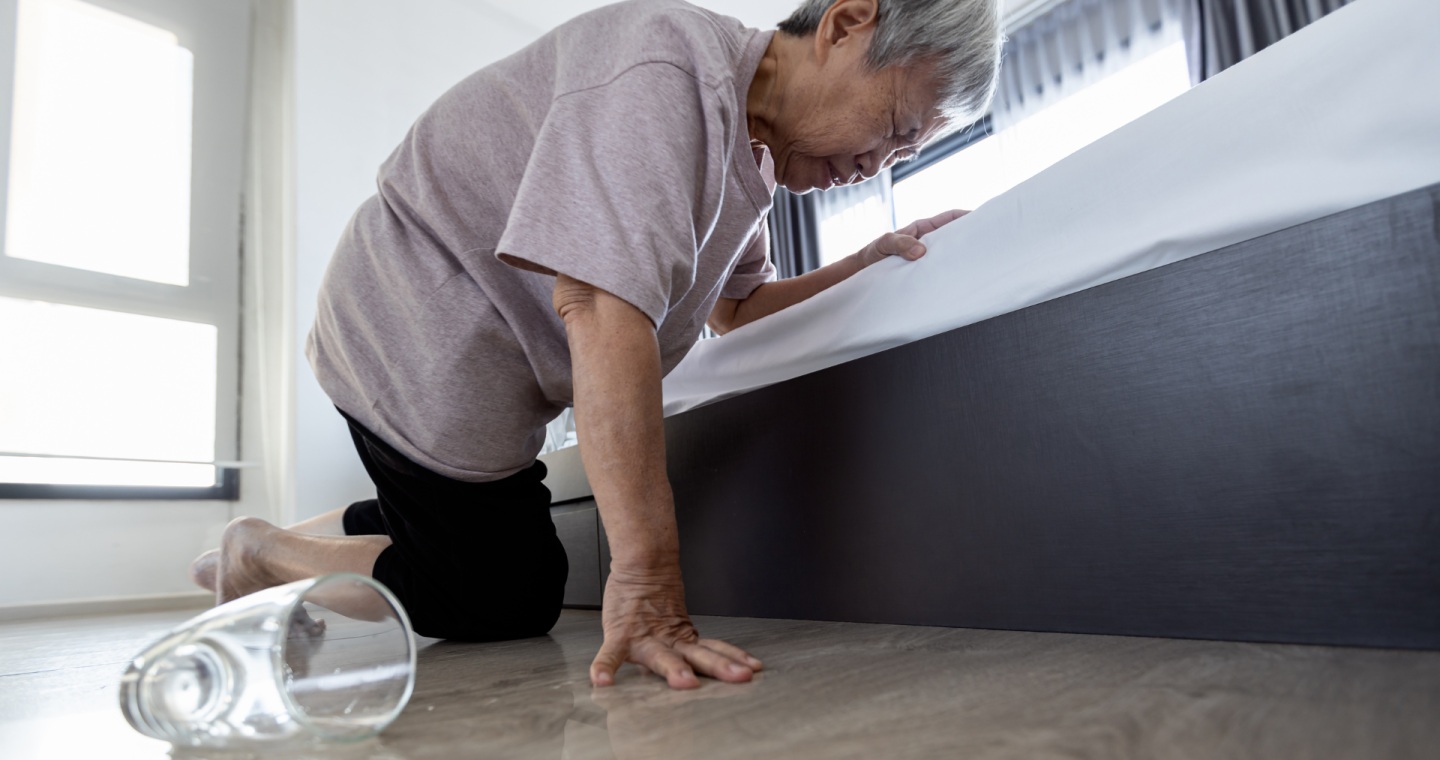Kate is an 84-year-old widow with mild Alzheimer’s Disease. She lives alone and in the past year she has lost 10 pounds. She has also fallen multiple times. This is serious. The last time she fell she was on the floor for at least 8 hours. Her daughter called and then came by when Kate didn’t answer the phone. She was hospitalized for a condition called rhabdomyolysis.
Afterwards, she was in a skilled nursing facility before returning home. She regained weight and received physical therapy. The daughter has “decluttered” the apartment to decrease the risk of falls. Her daughter plans on calling twice daily and visiting for several hours every day.
What is Rhabdomyolysis?
- Rhadomyolysis is an acute and serious medical condition that requires hospitalization.
- Muscle tissue is destroyed and large amounts of protein enter the blood stream.
- These proteins cause injury to the kidneys and can result in acute renal failure.
- Seniors who fall to the floor are at risk for rhabdomyolysis.
- A fall can result in immobility and pressure on muscle tissue.
- The result is destruction of muscle tissue within hours.
- Prompt medical attention is needed to restore kidney function.
What do you think will happen to Kate? Will she fall again? What does her future look like? Is there any way to decrease her likelihood of falling again?
There are three distinct sets of people who fall. Some seniors are healthy but do things that are risky for older adults. I’ve seen patients like these in the hospital and nursing homes. They do things like climbing high up on ladders to trim trees or do house repairs. (I have one old friend who is a super “go for it” athlete who has broken many bones.) The second set are seniors who are “getting older”. Accidental falls are more common. These seniors are the ones most likely to benefit from fall prevention interventions. The third group are frail seniors. Falls occur at any time. Falls can occur even when getting out of bed.
Kate is somewhere between “getting older” and frail. The giveaways are her developing dementia and her weight loss. These facts indicate that she is becoming more dependent. She was probably not eating enough. The result was weight loss and weakness. With her loss of strength, she became more sedentary. Then she fell. Hopefully, daily monitoring, good nutrition, and daily exercise will decrease the likelihood of future falls. But other factors may be at play. Does she have good judgement? Did the physical therapist recommend a walker? If so, it’s likely that her gait is unsteady.
Falls Can Have a Disastrous Impact on Quality of Life
Almost all seniors will have a fall at some time. One in four seniors fall annually. As people become elderly the risk of falling increases. Falls have major consequences. At least 10% of falls will result in a fracture. Hip fractures are both common and serious. 95% of hip fractures are due to falls.

Falls don’t just take a toll on the body—they have far-reaching consequences. Some seniors become afraid of falling. This results in hesitancy to go on outings, resulting in isolation. Repeated falls lead to physical decline and loss of ability to live independently. I have seen this scenario too many times. Aging becomes a distressing time in life.
I’ll be writing more about falls in coming posts. When do falls happen and what can be done to prevent them? Do fall detection systems help? And what should a caregiver do when a person has fallen? One step at a time.
Warmest Aloha,
PS: I say it over and over again: There’s no one more important than the caregiver in the daily life of a frail person.


Leave a Reply